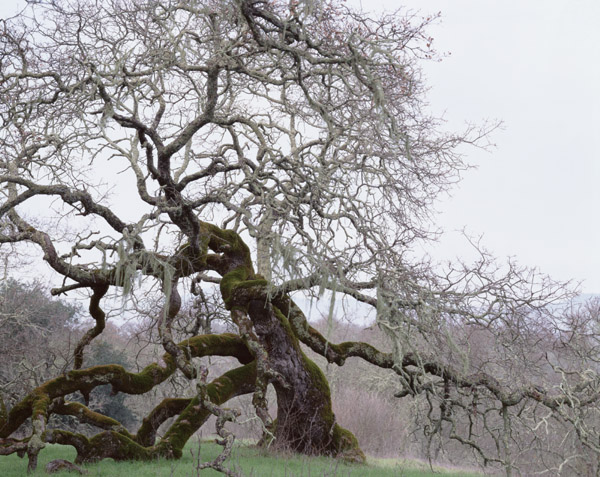So what do you see in this photograph? Look closely and carefully. The tree is knotted and gnarled, its branches reaching out like so many arms, going this way and that, almost as if it were a human being thrashing about in a hostile world. At first blush it reminded me of the tree in The Wizard of Oz that throws its apples at Dorothy and her troupe. Then again, it looked like might be from a more recent movie, perhaps one of the episodes of The Lord of the Rings or maybe even the fantasy world of Harry Potter. But whatever you think you might see, look closely and ask yourself: What is missing?
The photograph was once the scene of a brutal lynching. Lynchings are a part of American history, and as James Allen helped us to understand a few year back with his Without Sanctuary project, they were not simply events that took place in the dead of night and away from the public eye. Indeed, lynchings were often carefully planned activities—spectacles really—with the trains adjusting their schedules so that church goers could attend the “festivities” and numerous photographs taken to mark the occasion, many of the later converted into postcards to be sent to friends and family.
Lynchings of this sort no longer take place in the U.S. and so it is all too easy to locate such events in a distant past, a time we might imagine as long, long ago. And perhaps that is so inasmuch as such lynchings have been exceedingly rare since the early 1950s. But the problem with such consignment to a once malignant but now benign past is that it invites us to ignore the depths and ignominy of such behaviors. Most, no doubt, think of lynching as an activity used by southern whites to discipline blacks in the reconstruction and Jim Crow eras. That it was, but we should not forget that such lynchings also occurred in many places north of the Mason-Dixon line (one of the most famous took place close to where I write from in Marion, Indiana) and as Ken Gonzales-Day, has recently demonstrated, several hundreds of Latinos, Native Americans, and Asians suffered a similar fate in California between 1850 and 1932.
And so, back to the photograph above. It is one in a series of photographs taken by Gonzales-Day called Searching for California’s Hang Trees and is part of his attempt to witness an aspect of our national past that it has been all too easy to erase from our public and collective memory (see also his Erased Lynching series)—both geographically and otherwise. The “strange fruit” that Billie Holiday sung about is nowhere to be found in these photographs, but that would seem to be the point. The tree could really be anywhere: north, south, east or west. And those tortured while hanging from its branches could have been men, women and children of many different ethnicities and colors. It is not a part of our past of which we can be proud, but it is a part of our past and it needs to be remembered. And visualized. So, once again, what do you see when you look at the photograph?
Photo Credit: Ken Gonzales-Day

[…] http://www.nocaptionneeded.com/2012/12/strange-fruit-in-california/ Share this:FacebookGoogle +1TwitterLike this:LikeBe the first to like this. […]
The idea behind Gonzales-Day’s images reminds me of Sternfeld’s “On This Site.” Both bodies of work highlight some of photography’s strengths and limitations. The photographs alone cannot convey the idea of race relations and lynching, but the photographs really add weight and immediacy to the issue in a way that writing alone cannot.
Alejandro: You are absolutely correct. The photograph has to be placed in its context — and so one more reminder of the importance of mixed media — but once there it conveys something that words alone are simply not up to the task of communicating — at least not as eloquently or as efficiently.